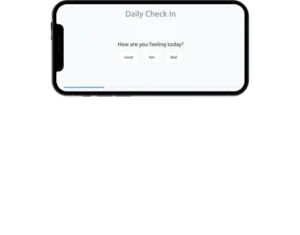The way healthcare businesses in Pennsylvania can obtain funding in 2025 is changing. Pennsylvania is the guinea pig for what the Office of Developmental Programs (ODP) calls performance-based contracting, formerly known as selective contracting.
Businesses are placed into tiers that determine the kind of compensation they’re eligible for.
Only those placed in the highest 3 tiers can compete for pay-for-performance payments (P4P). This alternative payment model (APM) is designed to incentivize the human services businesses by awarding them for meeting goals and performance standards.
In this blog, we’re exploring the different standards and tiers that will be implemented across all Pennsylvanian healthcare businesses. With the right strategies in place, P4P opportunities can be well within your reach.

What is Pay for Performance (P4P)?
Among healthcare providers, the most common payment model is the fee-for-service (FFS) model which awards pay based on the services provided. Some payment models such as capitation focus on the number of patients while other providers are paid salary based on the number of hours they worked.
The shift towards the alternative payment model (APM), performance-based contracting, indicates a trend towards value-based care since this new model emphasizes the quality of care rather than the quantity.
Pay-for-Performance (P4P) programs incentivize high-quality, efficient care by rewarding providers who meet or exceed specific performance metrics. This approach aims to improve patient outcomes, reduce unnecessary services, and lower overall healthcare costs.
This change inevitably causes healthcare businesses to compete against one another for funding, but only those who fall in the top 3 tiers are eligible for P4P. Here’s a look into what those tiers are.
Provider Tiers
There are 4 tiers: Conditional, Primary, Select, and Clinically Enhanced. All tiers will continue to receive fee-for-service (FFS) payments, but only some will have the opportunity to compete for additional funds.
Conditional Tier
This tier applies to providers operating under provisional or revoked licenses. Put simply, you do not want your business to fall under this tier. Providers placed in the conditional tier must work towards meeting the basic regulatory requirements by focusing on compliance with essential health and safety regulations. They do not qualify for P4P or Enhanced FFS; in other words, they lack the funding opportunities other tiers qualify for.
Primary Tier
This is the second lowest tier for providers who meet current standards. These organizations are compliant with all basic regulatory requirements, demonstrate consistent quality in delivering services, and may include improved staff training programs and higher resident satisfaction scores. In addition to FFS, they are also eligible for Pay-for-Performance (P4P) payments.
Select Tier
Besides meeting all of the standards in the Primary tier, providers in the Select tier deliver multiple residential services, and achieve a higher performance in health outcomes and efficiency. In addition to qualifying for P4P payments, providers may receive enhanced FFS payments for meeting the additional standards.
Clinically Enhanced Tier
This top tier is for providers who offer clinically enhanced medical or behavioral support and meet additional measures. They may also provide staff qualifications, specialized training, and demonstrate a higher capability to manage complex cases. Organizations prescribed to this tier receive the highest level of payments for meeting the enhanced standards.
What Can I Do to Unlock P4P?
While this represents a substantial change, it is essential to emphasize that being classified in the highest tier isn’t actually a prerequisite for securing P4P. All tiers except the conditional tier, are eligible for P4P. The ODP provides us with the key to unlocking P4P, as detailed in their implementation plan.
Here’s a list of the performance areas providers will be measured on. P4P measures will only be available for the performance areas that are bolded.
- Use of remote support technology
- Continuum of residential services
- Workforce
- Supporting individuals with complex needs
- Referral and discharge practices
- Data management
- Risk management
- Individual employment
- Regulatory compliance
- Community integration
- Quality
- Administration
To learn more about each performance area, you can find info on the ODP’s Implementation Plan.
Strategies for Securing P4P
Of the 12 performance areas, businesses can really only secure P4P from just 5 areas. We’re going to dive into these 5 areas to better understand them and reveal strategies on how your behavioral health business can be sure to secure funding.
Use of Remote Support Technology
This performance area emphasizes the integration of technology to enhance health and wellness, stabilize the workforce, and increase independence for individuals receiving care. By incorporating remote support tools, providers can offer more personalized, efficient, and responsive care, leading to better outcomes and increased autonomy for those they serve.
PUPS Automated Check-In Software is the perfect tool for monitoring both your staff and the families of IDD residents. Our monitoring software allows you to send customized, automated daily messages to families and staff to view in real-time and help prevent early warning signs. You can view your reports anytime to adjust treatment plans, staff scheduling, and other care strategies as needed to improve client outcomes.

Here’s what our users think about our software!
“Our organization works with an older population that don’t always understand technology. However, PUPS Automated Check-In provides the flexibility to be a text or phone call which is great to reach and Check-In with all of our clients.” – Scott M., Aging & Family Services of Mineral County
“We’ve used PUPS with a few clients so far, and it was fabulous!” – Caitlyn O., Child and Family Agency of Southern Connecticut, Inc.
Start using PUPS Automated Check-In now to monitor family relationships and staff effectively. Try our basic plan for FREE and see the impact on your performance metrics.
Actionable Strategies:
- Implement Remote Monitoring Tools: Introduce remote monitoring systems like PUPS Automated Check-In, that track health metrics, safety alerts, and daily activities, allowing for timely interventions and reducing the need for constant in-person supervision.
- Enhance Communication Channels: Utilize video conferencing, mobile apps, and other communication technologies to facilitate regular check-ins and support, enabling individuals to receive guidance and assistance while maintaining independence in their living environments.
Continuum of Residential Services
The Continuum of Residential Services focuses on providing intellectual and developmentally disabled (IDD) residents with various living options that range from less restrictive settings, such as Life Sharing and Supported Living, to more traditional Residential Habilitation in licensed community homes. These less restrictive models are cost-effective, have higher satisfaction ratings, and require less traditional staffing.
Actionable Strategies:
- Diversify Service Offerings: Ensure your healthcare business offers at least two of the three key residential services: Life Sharing, Supported Living, or Residential Habilitation, to meet diverse needs and preferences.
- Individual Assessment: Regularly evaluate individuals to determine if they may benefit from a transition to a more independent and less restrictive living environment, thus enhancing their quality of life.
Workforce
The Workforce performance area emphasizes the importance of well-trained, knowledgeable direct care staff who provide essential daily support to individuals. This includes addressing issues like staff credentialing, stability, and the use of technology to improve care quality.
Professionalizing the healthcare workforce through competency-based credentialing, enhancing staff retention, and ensuring direct care staff are equipped to handle complex needs are key to meeting this standard.
Actionable Strategies:
- Implement Credentialing Programs: Invest in nationally recognized credentialing programs for Direct Support Professionals (DSPs) and Front-Line Supervisors (FLSs) to improve service quality, job satisfaction, and staff retention.
- Enhance Workforce Stability: Track and analyze data on staff turnover and vacancy rates, and develop targeted strategies to improve retention, such as offering competitive wages and investing in professional development.
Individual Employment
The Individual Employment standard guarantees that individuals with disabilities have access to competitive integrated employment (CIE). The goal of this performance area is to see that IDD residents are paid at or above minimum wage, receive comparable benefits, work alongside employees without disabilities, and have similar advancement opportunities. This is essential for their independence, confidence, and meaningful community engagement.
Providers are expected to support individuals in finding and maintaining employment that aligns with their abilities and interests, thereby contributing to both personal growth and potential cost savings for the system.
Actionable Strategies:
- Support Job Readiness: Implement programs that assist individuals in developing skills necessary for securing and retaining competitive integrated employment. This may include job coaching, resume building, and interview preparation tailored to their needs.
- Collaborate with Employers: Build partnerships with local businesses to create job opportunities that accommodate the abilities of individuals with disabilities, ensuring ongoing support and reasonable accommodations in the workplace.
Community Integration
The Community Integration standard ensures that individuals are actively engaged in meaningful activities outside their homes, based on their strengths, interests, and preferences. This standard aims to promote social inclusion, personal growth, and a higher quality of life by encouraging participation in community life.
Actionable Strategies:
- Develop Personalized Activity Plans: Collaborate with IDD residents to tailor activity plans that reflect their interests and goals. These plans should include opportunities for community engagement, such as volunteering, pursuing sports, joining clubs, or participating in local events.
- Facilitate Community Connections: This strategy requires connecting with local organizations and community groups to create pathways for IDD residents to get involved in their communities. This encompasses anything from arranging transportation and providing necessary support staff to connecting individuals with resources that match their interests and needs.
Conclusion
As Pennsylvania healthcare businesses navigate the upcoming shift to performance-based contracting, understanding the tiers and performance standards is crucial for unlocking Pay-for-Performance (P4P) opportunities. The transition to this model represents a significant change, but with the right strategies, your healthcare business can thrive in this new environment.
One of the most challenging areas for many providers transitioning from traditional pen-and-paper will be the adoption of technology. Remote support tools like PUPS Automated Check-In Software offer a practical solution, helping you meet the ODP’s expectations for integrating technology to improve care and outcomes.
For a deeper dive into these strategies, especially how technology can help unlock P4P payments, be sure to subscribe to receive our upcoming ebook! We’ll cover comprehensive insights and actionable advice to help position your organization for success in 2025 and beyond.


